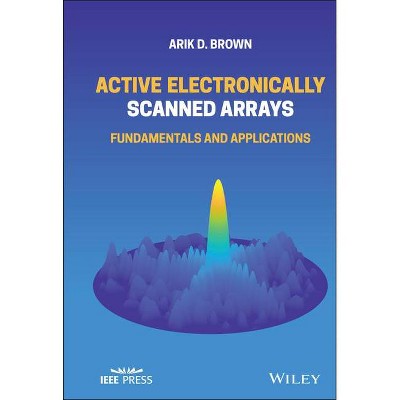Radome Electromagnetic Theory and Design - (IEEE Press) by Reuven Shavit (Hardcover)

About this item
Highlights
- Radome Electromagnetic Theory and Design explores the theoretical tools and methods required to design radomes that are fully transparent to the electromagnetic energy transmitted or received by the enclosed antenna.
- About the Author: REUVEN SHAVIT is Professor in the Department of ECE, Ben-Gurion University, Israel.
- 304 Pages
- Technology, Radar
- Series Name: IEEE Press
Description
Book Synopsis
Radome Electromagnetic Theory and Design explores the theoretical tools and methods required to design radomes that are fully transparent to the electromagnetic energy transmitted or received by the enclosed antenna. A radome is a weatherproof and camouflaged enclosure that protects the enclosed radar or communication antenna, and are typically used on a fixed or moving platform such as an aircraft, ship or missile.
The author -- a noted expert in the field -- examines the theoretical methods that apply to all type of radomes: planar, conformal, airborne and ground based. The text offers a description of the various measurement methods that characterise the electrical parameters of a radome, and discusses their merits in terms of accuracy. This groundbreaking book brings together in one volume all the necessary theoretical tools to design radomes
From the Back Cover
A COMPREHENSIVE REVIEW OF THE THEORETICAL AND PRACTICAL ASPECTS OF RADOME DESIGN WITH SIMULATION EXAMPLES
Radome Electromagnetic Theory and Design explores the theoretical tools and methods required to design radomes that are fully transparent to the electromagnetic energy transmitted or received by the enclosed antenna. A radome is a weatherproof and camouflaged enclosure that protects the enclosed radar or communication antenna. Radomes are typically used on a fixed or moving platform such as an aircraft, ship or missile.
The author -- a noted expert in the field -- examines the theoretical methods that apply to all types of radome: planar, conformal, airborne and ground based. The text offers a description of the various measurement methods that characterise the electrical parameters of a radome, and discusses their merits in terms of accuracy. This groundbreaking book brings together in one volume all the necessary theoretical tools to design radomes. This important text:
- Includes antenna theory and applications that draw from many disciplines of electromagnetics, transmission, scattering and measuring characterisation methods
- Offers information on applications that include radar and communication antennas mounted on fixed locations, aircrafts, UAV, missiles, ships and satellite communication antennas
- Contains the theoretical background of the radome
- Presents a practical display of design graphs and examples, drawing on the author's background as a practicing engineer with academic theoretical design experience
Written for research and industrial professional engineers, Radome Electromagnetic Theory and Design offers a comprehensive volume to all aspects of theoretical design and optimisation of radomes.
Review Quotes
I have been active in the areas of radome design and analysis, as a quick search of my Google scholar list of articles on Frequency Selective surfaces (FSSs) will readily show. In my opinion, this book is simply only one-of-its-kind on the subject of radomes. It is well organized, thorough, and it is easy to follow. It is useful both for practicing engineers designing radomes, graduate students learning about radomes and how to design them, and for researchers wanting to improve the existing designs. The book is an interesting mix of both the theoretical and practical aspects of analysis and design and is very well suited for use as supporting material for a Short Course on radomes.
All in all, I have a very high opinion of this book, and I recommend it strongly to anyone who is either active in the field of radome, or wants to get into it in the future. I am very confident in saying that you couldn't find a better reference on the subject, not only from an academic point of view, but also as an excellent source of information useful for designing radomes.
Raj Mittra, IEEE
About the Author
REUVEN SHAVIT is Professor in the Department of ECE, Ben-Gurion University, Israel. He has interspersed his academic career with periods working for the Ministry of Defense (Israel) as Head of the Antennas Group, and as Principal Engineer for Electronic Space Systems Corporation, Massachusetts, USA. He has an extensive consulting background and is a Senior Member of the IEEE Antenna and Propagation Society.











